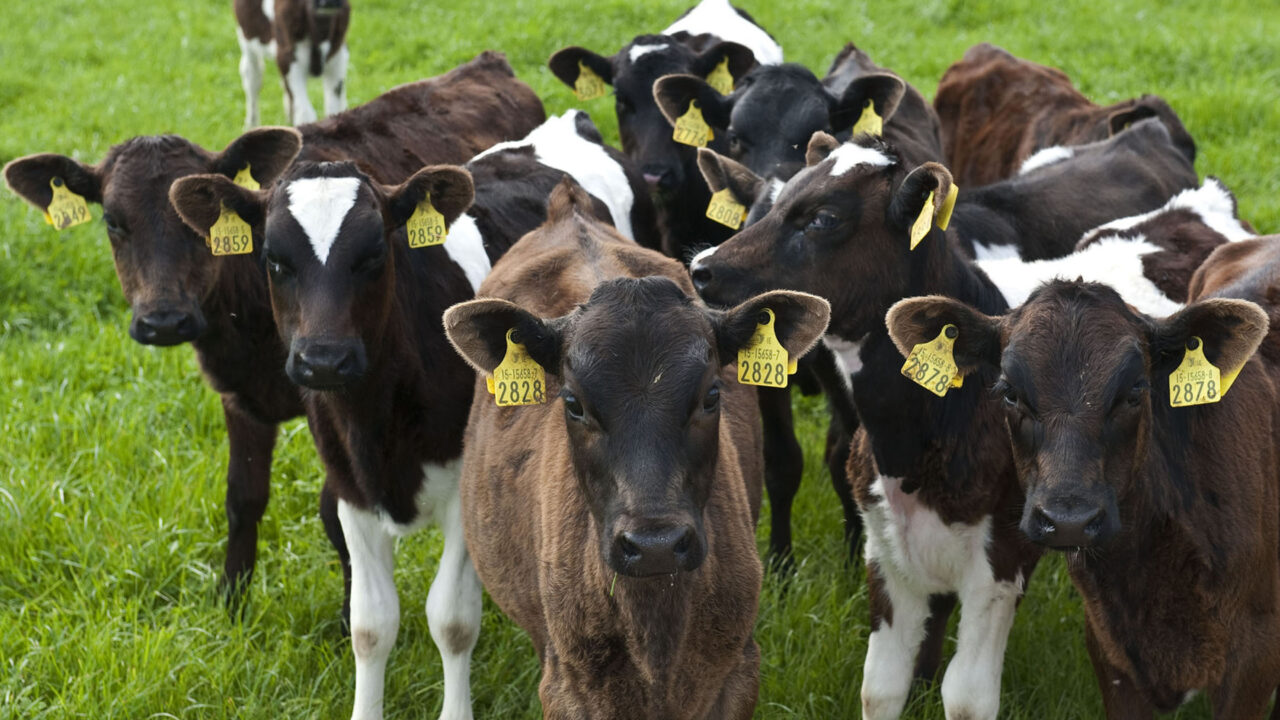The View from Teagasc:
Farming background
The farm of 91 ha including nine ha leased/rented was previously in dairying but was always rearing calves to steer beef. The farm infrastructure still includes paddocks, internal roadways and so on. The land type is medium to heavy soils with a very undulating landscape and is located in a disadvantaged area.
Current and future farming system (2013+)
Calf-to-steer beef (Friesian)
• February –March born Friesian bull calves purchased at two weeks of age in 2013 will be reared for slaughter following a second season at grass by Dec 2014 at approximately 22 months.
• Previously the cattle system was finishing Friesian bull calves at 16 months.
Calf-to-beef (heifers)
• 120 April – May born Hereford / Angus heifer calves purchased at two weeks of age in 2013, to be finished at 18-22 months in late 2014 / early 2015.
Calf rearing system
There are two automatic calf feeders on this farm which can rear 70 calves/feeder. Accordingly the heifer calves are only purchased once the Friesian bull calves are weaned. The calf rearing system on this farm has four equally important periods:
Phase 1 : Quarantine Shed.
Phase 2 : Specific Calf rearing shed with access to adjacent paddock.
Phase 3 : Slatted shed post weaning with access to grass.
Phase 4 : 100 per cent at grass.
Quarantine shed
A converted pig farrowing shed is used initially to batch calves into groups of five/pen. Training to drink from bucket teats is supervised upon arrival onto farm.
Day 1 : Half rate milk replacer + electrolyte is fed.
Day 2 : Feeding as per day one
: Vaccination programme (IBR, RSV, PI3)
: Calves are computer tagged for automatic calf feeder
Calves are then moved to the main calf rearing shed.
Calf rearing shed
This is a 65 day diet programme of milk replacer, meal ad-lib and straw only roughage. Our farm has two calf rearing sheds with an automatic computerised milk feeder in each shed. Each shed holds 70 calves and generally is filled within two weeks. Both sheds are straw bedded and at 21 days calves have access to an adjacent paddock beside each shed. Location of calf shed is therefore crucial to allow for an outdoor acclimatisation.
Calves are vaccinated for blackleg prior to paddock turnout. Preventative measures for coccidiosis is addressed throughout by medicating meal and oral dosing. Benefits on this farm in having adjacent paddocks, include reduction in health / disease pressure, reduction in straw bedding and very importantly training to an electric fence wire.
Slatted shed post weaning
Once weaned, each block of 70 calves is moved to two separate slatted sheds. Both sheds again have access to new adjoining paddocks. Calves are fed 2 kgs meal, straw roughage plus grass access. Calves at this stage are weighed and after 4-5 wks they are 100 per cent at grass. Calves during this period are treated for lice and again coccidiosis prevention is implemented.
Calves at grass period
No meal is offered post 2-3 wks on grass and five acre paddocks are strip grazed with each grazing group. Calves are dosed every 4-5 wks with alternate products and are periodically weighed to monitor growth rates.
Variable calf rearing costs to-date (end Sept� 2013)
Item No Price
Vaccines 4 €16
Milk Replacer 37kg @ €2.10 €78
Straw 0.6bales@€14 €8
Lectade €0.50
Meal 170kg@ €370/t €63
Dosing/Vecoxan €9
Grass €30
Purchase Price /head €150
Total €355
Summary
• Clearly defined husbandry strategy for each phase of calf rearing process.
• Vaccination programme to minimise mortality and lack of thrift.
• Maximum milk replacer intake (37+ kgs / calf).
• Allocation of good quality grass post weaning to ensure target weight gain
• No meal post weaning.
By Michael Murphy, Latteragh, Nenagh and Michael Daly, drystock adviser, Teagasc, Nenagh, Co Tipperary
